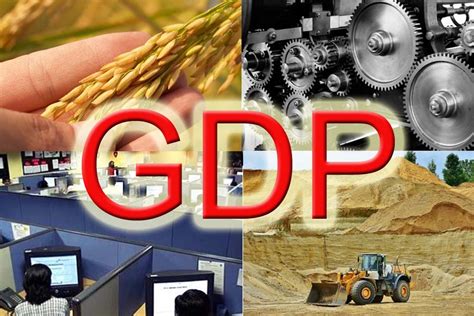Story by Vance Ginn
Government spending is the ultimate burden on our lives as we must then fund the ways politicians expand their roles through higher taxes, higher prices, and less liberty.
In fact, the excessive spending by President Joe Biden and Congress and the excessive money printing by the Federal Reserve have created a dire economic situation. There’s no wonder 7 out of 10 people expect a recession over the next year.
The latest indicator of this concern is a recent report showing the U.S.’s real GDP was revised lower to just a 2.1% increase last quarter. Another measure of economic activity is the real average of GDP and GDI, which accounts for domestic production and income. It increased by just 1.3% to $20.2 trillion. This measure has declined in three of the last six quarters, resulting in this value being up by only 0.8% since the first quarter of 2022.
Meanwhile, the federal budget deficit is growing at a faster rate because of overspending and declining tax collections from a slowing economy. The national debt has ballooned to nearly $33 trillion, and just net interest payments on the debt will soon be a top federal expenditure of at least $1 trillion. Adding to these fiscal challenges are other large expenditures including $1.2 trillion in the so-called Inflation Reduction Act.
This means that the 120% debt-to-GDP ratio will continue to increase, thereby making funding the debt more challenging. The Congressional Budget Office recently used its rosy economic assumptions to forecast deficits of $2 trillion per year. Given that net interest payments on the national debt will be about half of that, the federal government will be essentially insolvent as it pays down our debt with other debt.
Without spending restraint, the result will be higher interest rates, higher inflation, and less economic activity for the foreseeable future.
This reality seems not to have struck the president, who is traveling the country touting his economic agenda. Biden’s stated goal is to grow the economy “from the bottom up and middle out,” yet he has proposed tax hikes of $4.8 trillion, which comes as no surprise in light of his profligate spending. The result is a devalued dollar, a downgraded credit rating, and economic pessimism, to say nothing of the latest disappointing GDP growth. “Bidenomics” is working wonders!
Without a major course correction, the economy will continue to weaken. Although unlikely to happen under the current administration, the government should seek to adopt a fiscal rule of a responsible budget.
With spending capped at the rate of population growth plus inflation, a responsible budget does not exceed the average taxpayer’s ability to pay for government spending. This rate should be a ceiling and not a target.
This limit would force spending restraint, paving the way to reevaluate excessive spending that has increased under Republicans and Democrats. This rule would expand the possibilities of tax relief and help to eventually pay down the enormous debt, which is just a future tax on the public.
This type of fiscal rule has already helped states such as Colorado, with its taxpayer bill of rights, to pass sustainable budgets that remove obstacles to growth. Other states, such as Iowa, Montana, Tennessee, and Texas, have implemented a similar rule.
The success of this fiscal rule across states proves its powerful potential to rein in spending at the federal level, and every level of government, in a sustainable way. How many more economic red flags must the government see before addressing its untenable budget?
Read More From PatriotAmerican
The public deserves better, and the trade-off of excessive government in our lives has for too long resulted in less opportunity for people to flourish. Let’s get back to the foundations of our constitutional republic by putting strict limits on fiscal, regulatory, and monetary policies before our opportunities are further limited by politicians.


Ok who didn’t see this coming?